How to get fit and lose weight in 2025 without Ozempic
Diets alone are not the answer. Experts say there is a better, healthier way to losing weight, keeping it off and stay strong. Follow these exercises.
Fitness
Don't miss out on the headlines from Fitness. Followed categories will be added to My News.
Make 2025 the year you lose weight but also get strong and lean. Lose the moobs and the belly fat, the love handles and the paunch, and replace them with lean muscle tissue that will leave you looking years younger but will also fire up your metabolism and enhance your health span. In the pursuit of speedy weight loss it is easy to lose sight of what our bodies need to stay healthy in midlife and beyond. Drastic new year diets and fat jabs can have a dramatic effect on our waistlines, but at what expense?
“If we lose weight rapidly and without exercise intervention, there is often a sharp drop in muscle tissue as well as body fat,” says Jonathan Folland, professor of neuromuscular performance at Loughborough University. “Without realising it, that kind of weight loss can seriously impact physical health and longevity.”
Semaglutide, the active ingredient in the weight-loss jab Ozempic, works by mimicking the hormone glucagon-like peptide-1 (GLP-1), helping to control blood sugar levels, slowing down stomach emptying and suppressing appetite. The effects are impressive, but one large study involving 1,961 obese adults that was published in the New England Journal of Medicine showed that almost 40 per cent of the weight some people lost came from lean mass, which included muscle, alongside some bone and organ tissue. Severely restricting calorie intake without attempts to counter the resulting fat loss with nutrients and resistance exercise can have a similar outcome.
“If we neglect muscle health when losing weight, particularly as we get older, the effects can be catastrophic,” says the personal trainer Dalton Wong. It is, he says, a strategic combination of muscle-enhancing resistance training, fat-blasting aerobic activity and the right kind of food that can prove transformational.
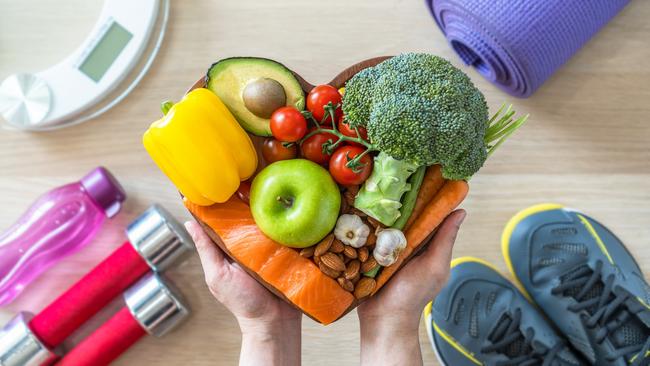
A defined and strong physique looks good, but beyond aesthetics its benefits are more striking.
“Healthy muscles positively influence metabolism and fat-burning ability, and they help our bodies to control blood sugar and to ward off conditions such as type 2 diabetes and cardiovascular disease,” Wong says. “Weight loss without resistance and high-impact exercise can also impact bone density, predisposing people to a greater risk of fractures and osteoporosis.”
By strengthening muscles as we age, researchers have shown you can almost double the metabolic health benefits, such as improved blood sugar control, compared with dieting alone. Scientists from Loughborough University and various other institutions have shown that even a short bout of vigorous exercise, such as an HIIT class or a fast run, not only reduces circulating hunger hormones such as ghrelin, but increases levels of GLP-1, the very same appetite- suppressing hormone mimicked by drugs such as Ozempic. Working out regularly will help to control appetite in the longer term.
Folland says that the best thing we can do for our health is to keep our bodies lean and strong. “Maintaining lean muscle tissue is very powerful for improving longevity,” he says, “and the stronger and fitter you are, the better you will feel.”
RESISTANCE TRAIN TO BUILD MUSCLE
Resistance training is the smartest move to make if you want to lose weight and improve your health from midlife onwards. From our thirties muscle mass starts to ebb away, but by our late forties it nose-dives, the process known as sarcopenia bleeding the average body of up to 250g of muscle a year. Without exercise to preserve muscle strength, someone in their seventies typically has one third less muscle mass than a 25-year-old.
“Increasing your lean muscle mass increases your resting metabolic rate - the energy needed for your body to burn at rest,” Folland says. “If you replace surplus body fat with more lean muscle tissue, you will burn more calories even sitting or standing still.”
Dozens of studies have confirmed the metabolism boost from weight training.
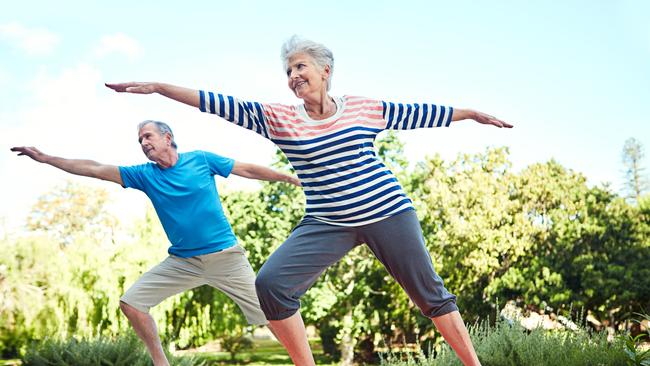
At Wake Forest University exercise scientists put 249 overweight sixtysomethings on a reduced-calorie diet and asked some to add resistance training - three sets of 10-12 repetitions on weight machines at a gym, four days a week - and another group to walk for 45 minutes on at least four days a week, with one group doing no extra exercise. Their results in the journal Obesity showed that all exercisers lost an average of more than 7kg compared with 4.5kg lost by the dieters, but those doing resistance training lost by far the most body fat.
Wong says the greatest fat-blasting effects come from working the largest, most powerful muscles of the lower body - the gluteal muscles in the buttocks, the quadriceps and hamstrings in the legs. “Because they are so big, using these muscles really raises your body’s metabolic rate,” he says. “As your lower-body muscles get stronger, you will burn a lot more fuel overall, which prevents fat from being stored in other parts of the body such as the chest and belly.”
Resistance training has other far-reaching benefits, though. One study of more than 4,500 adults in the Mayo Clinic Proceedings journal showed that even moderate gains in lean muscle mass from using weights a few times a week reduced the midlife risk for type 2 diabetes by 32 per cent.
Here’s everything you need to get strong and lean.
THE ONLY STRENGTH WORKOUT YOU WILL NEED
”Aim to do this conditioning circuit on three or four non-consecutive days a week,” Wong says.
“It takes about ten minutes to complete a single circuit so won’t take up too much time but is highly effective for building strength.
Warm up with some gentle jogging or marching on the spot for 3-5 minutes.
Perform 12-15 repetitions of each exercise and take a rest of between 30 and 45 seconds before moving on to the next exercise.
Perfect your technique with bodyweight versions of each exercise before adding weights.
While we shouldn’t be fearful of progressively lifting heavier weights, start at a manageable level - that’s a weight that allows you to complete a set of an exercise comfortably.
This might be 4kg for women or 6-7kg for men. I recommend the following workload depending on your fitness level.
Take a two-minute breather between each round of the circuit if you are performing it more than once.”
Beginner = 1 circuit
Intermediate = 2 circuits
Advanced = 3+ circuits
SQUATS
Why
Squats primarily engage the glutes, hamstrings and quads. “It is essential to be able to squat as you get older as keeping muscles in the lower body strong helps with functional balance and mobility,” Wong says.
“Add weights as you get stronger.” Brazilian scientists showed that squats are more effective than traditional abdominal crunches for strengthening the muscles around the core, including the internal obliques on the sides of the waist and the multifidus, which is important for protecting against back injury.
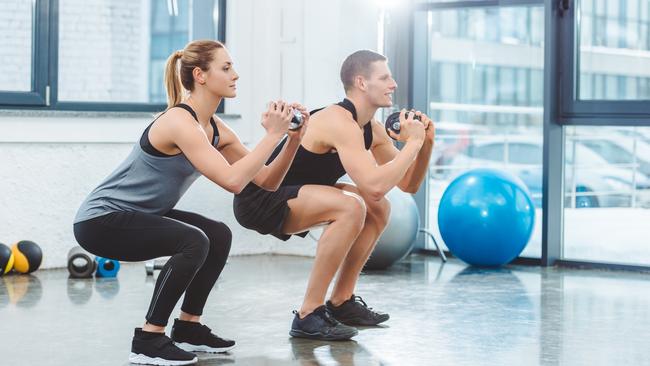
Many smaller muscles in the lower leg and around the knees are also recruited during the squatting action which help with balance and stability around joints. Squats can even boost brain function. Italian researchers reported that squats send signals to the brain that are vital for producing healthy neural cells.
How
Stand with feet shoulder-width apart, arms by your sides. Squat down as far as is comfortable, as if sitting into a chair, raising arms in front of you for balance. Push through the heels to straighten legs and return to the start position. Get used to the movement before adding weights.
DEADLIFT
Why
Deadlifts improve functional, postural and spinal health by targeting muscles in the back, shoulders and legs. “They are incredibly good for strengthening the muscles of the core that support the lower back,” Wong says. In a study published in Applied Sciences, the dumbbell deadlift burnt more calories than the weighted lunge or bent-over row. And researchers reporting in the journal Medicine & Science in Sports & Exercise who assessed a range of exercises for their ability to work the gluteal muscles found the single-leg Romanian deadlift the outstanding exercise for achieving strong, firm buttocks.
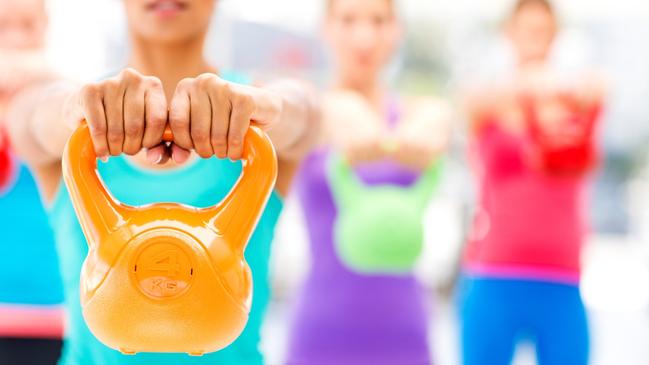
How
Stand with feet shoulder-width apart and hold a dumb bell in each hand by your side. Keep toes pointing straight ahead, back straight and shoulder blades pinned back. Push your hips back and allow the dumbbells to lower towards the floor, keeping weights close to your thighs. At the point the weights reach just below your knee, bend the knees slightly to lower the dumbbells slightly closer to the floor. Next drive up through both feet to raise the dumbbells, pushing your hips forward and squeezing your glutes until you return to the standing start position.
LUNGE
Why
“Lunges are great for building leg and glute strength - once you get used to doing them in a forward direction, add reverse and sideways lunges to target all of the leg muscles,” Wong says. Do them slowly to avoid wobbling and add weights as you get better at them.

How
Stand with hands on hips and take a large step forward with your right leg, ensuring knee is over the foot. Bend both legs to 90 degrees and push through the heels to return to the start position. For a reverse lunge step back with the left leg, ensuring right knee is over the foot. Bend both legs to 90 degrees. For lateral lunges, take a stride out to the side and with the striding leg lower your bottom towards the floor pushing back, as if going to sit down, so that the front knee does not go too far over the toes. The chest should stay up and the other leg straight. Push up through the hip and come back up to standing.
PRESS-UP
Why
No other exercise quite matches the press-up in the way it works all of the body’s major muscles in the trunk, chest, arms, hips and legs. Harvard Medical School researchers reported that men who can complete 11 or more consecutive press-ups have less risk of developing heart disease over the following decade than those who could do fewer than 10. Those who managed 40 press-ups in one go were at a 96 per cent lower risk of heart problems than those who managed fewer than 10.
You don’t have to aim that high in your fifties and beyond - do as many as you can manage to enhance longevity.
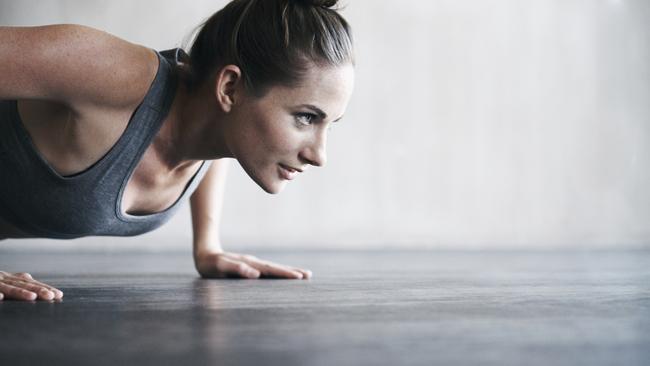
How
Start in your raised plank with toes on the floor and feet hip width apart. Hands should be shoulder-width apart and placed on the floor under the shoulders. Keep a straight line through the body at all times. Gently gently pull the shoulder blades back and lower the body down towards the floor, maintaining a straight line. Keep tension in the arms during the movement and then in a controlled fashion push back up. If that is too hard, try performing a press-up with knees on the floor, still keeping a straight line from knees to chest and aiming for good depth in the move.
BENT-OVER ROW
Why
“Any type of weighted row, including the upright row, inverted row and the bent-over row, are great for working the muscles of the upper and middle back area,” Wong says. “And these muscles play a key role in healthy movement and posture.”

How
Stand with feet shoulder-width apart and holding a dumbbell in each hand with arms straight at your sides. Bend forwards, hinging from the hips. Bend your knees, keeping your back straight, and allow the arms to hang straight down. Squeeze your shoulders together to “row” the weights up to chest level. Slowly lower back down.
THE EXERCISE EVERY MAN SHOULD ADD: PULL-UPS
Why
“People think pull-ups just work the muscles in the arms and shoulders, but they actually engage the whole body, which is very important for middle-aged men in the battle against sarcopenia,” Wong says. “Pull-ups also improve grip strength, considered a very strong indicator for muscular health and longevity, and the better you get at them, the more your muscular endurance will increase.”

How
Get used to pull exercises by doing an inverted pull exercise with a suspension training device before progressing to the real thing. When you are ready to try a conventional pull-up, you can use an exercise band to offset some of your bodyweight or even use a low bar while you build strength. Stand under a chin-up bar and reach your arms overhead with your palms facing away from you. Grab the handles firmly with a full grip position (thumbs wrapped around the handles).
Keep your feet slightly apart and brace the core of the body. Keep your head in line with your trunk beneath your hands and keep your wrists in a straight line with your forearms. Pull your shoulders back and down.
Slowly pull your body upwards by bending your elbows and pulling your elbows down to your sides. Avoid swinging your body during your upward pull. When your chin is level with the bar or your hands, pause momentarily then slowly return to your starting position until your arms are fully extended.
THE EXERCISE EVERY WOMAN SHOULD ADD: STEP-UPS
Why
Stepping of any kind - upstairs, on a step machine or onto a small platform as for this exercise - is a great way to build strength and endurance in the glutes, hips and hamstrings. “It is very important for women who often develop weakness in the hips with age,” Wong says. “Step-ups work on knee, hip and core strength in one movement.”
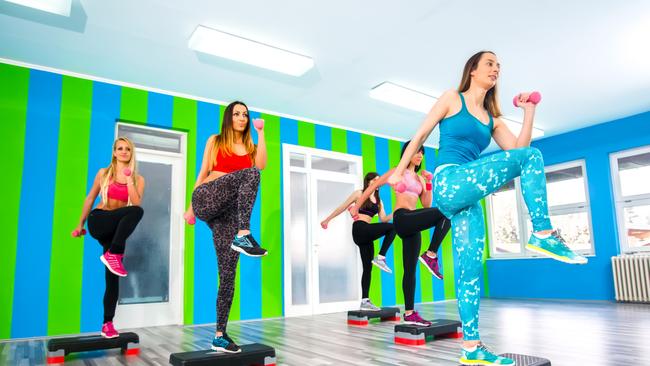
How
Use a box or platform that is not too high. Stand facing the step with hands on hips or at your sides. Place your right foot on the surface of the platform and push through the heel to raise yourself up onto the step. Place your left foot next to your right at the top before stepping back down with your right foot.
CHEAT’S OPTION
If you do only one strength exercise, make it 10 squats every 45 minutes of a working day. Researchers reporting in the Scandinavian Journal of Medicine and Science in Sports that suggested doing 100 squats a day - broken down as 10 every 45 minutes - boosts the body’s ability to control blood sugar, warding off type 2 diabetes, while others have shown that one minute of squats every hour when you are sitting can boost brain function.
This article originally appeared on The Times.
More Coverage
Originally published as How to get fit and lose weight in 2025 without Ozempic




